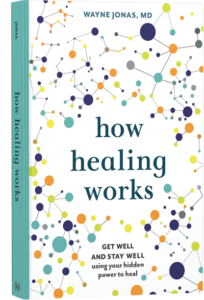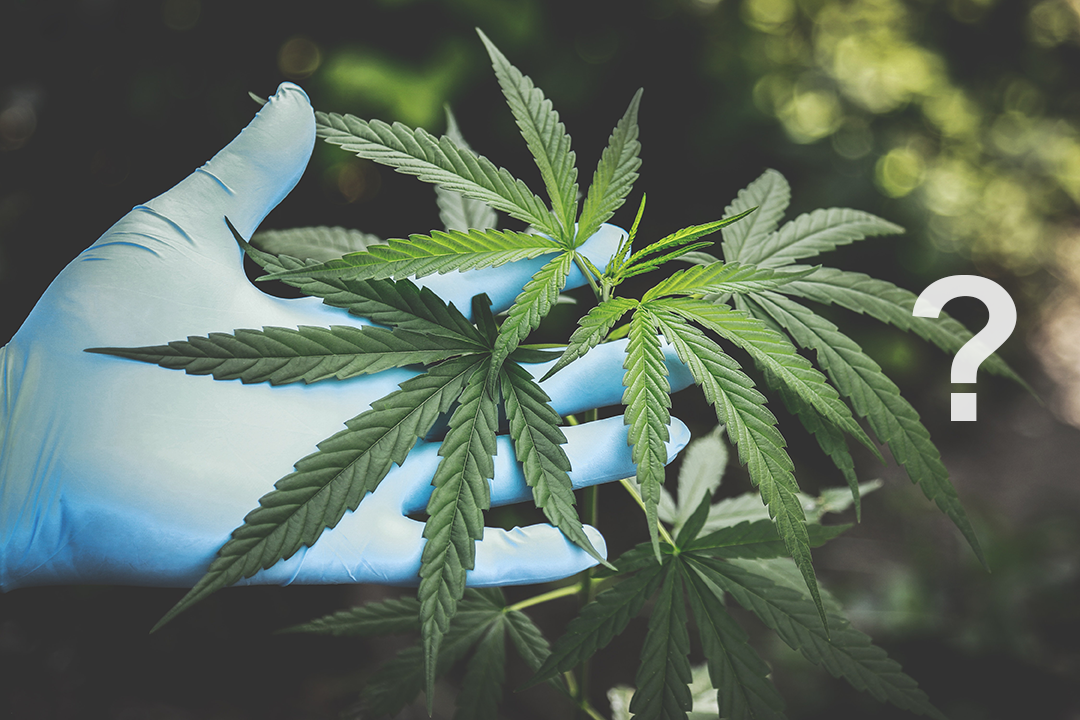What should I know about medical cannabis?
Find answers to some frequently asked questions and check out our new Cancer and Cannabis Pocket Guide
You have options.
This may be the most important message to share these days about medical cannabis. Also known as medical marijuana, and kin to the popular CBD products you may have seen or heard about, cannabis for medical use has skyrocketed in popularity over the last few years. It is now legal to use in 37 of the 50 U.S. states, with the other 13 allowing legal use of cannabidiol (CBD) products containing less than 3 percent of the substance that produces the marijuana “high,” tetrahydrocannabinol (THC).
When you first begin exploring the effects of cannabis, consider keeping a journal to track your reactions and the types that you are trying. Talk to your doctor about your interest in exploring medical cannabis. The reasons for this is that the rules vary widely and are changing rapidly.
Each state with a medical cannabis program has their own set of rules. You can search for your state’s program by clicking here.
| Definitions Cannabis use can be overwhelming for cancer patients to navigate, especially considering the different terms. Here’s a breakdown of some of the top and most common terms with their definitions. |
| Dispensary A dispensary is a shop where cannabis is sold for medical or recreational use, also known as adult use. |
| Budtender A budtender is an employee of a dispensary and should be able to answer your questions about cannabis and refer you to products that may address your specific needs. |
| Strains There are three main “strains” or types of cannabis. A strain is categorized as an indica, sativa, or hybrid. Within those categories, there are many different strain versions and products with names like OG Kush, Acapulco Gold, Pineapple Express, and many others, each of which has different effects. |
| Indicas Generally produce a relaxing effect on the user while sativa is known to have an energizing effect. A hybrid is a combination of the two. |
| THC An active ingredient found in cannabis that produces the “high” sensation that many users describe. |
| CBD The second-most prevalent active ingredient found in cannabis and does not cause a high. |
What is medical cannabis used for?
Cannabis for medical use is not yet approved by the U.S. Food and Drug Administration, even though it is legal to use in many states. Our Cancer and Cannabis Pocket Guide includes some history of the plant and its status in the U.S. over the past 100 years.
In the United States, cannabis is classified as a Schedule 1 drug. However, state-by state legislation has allowed more studies under state laws. Pennsylvania, for example, has a provision for academic-industry research partnership in its medical cannabis law.
The growing legalization of cannabis in the U.S. has led to more and multiple types of studies. For example, when the state of Pennsylvania legalized cannabis for medical use in 2016, the law included a provision to allow research by medical centers such as Thomas Jefferson University in Philadelphia and its hospital system, Jefferson Health. Other centers are doing similar work.
In addition, the experience of medical experts and many patients has shown that for some, cannabis is an effective treatment for a variety of symptoms. These include, but are not limited to:
- Pain, especially chronic pain, and nerve pain.
- Muscle spasms and tightness.
- Nausea and loss of appetite from chemotherapy.
- Several symptoms of HIV and AIDS.
- Several symptoms of multiple sclerosis and ALS (Lou Gehrig’s disease).
- Symptoms of Crohn’s disease, epilepsy, and seizure disorders.
- Anxiety, and in some cases depression.
- Insomnia and other sleep problems.
Glaucoma is another condition for which cannabis can be a useful treatment. The caution here is that the American Academy of Ophthalmology recommends against using cannabis for this purpose, because safe, effective, and research-proven glaucoma drugs are available.
In short, cannabis has been tried for many conditions, is effective for some, and we are learning more as restrictions loosen and research is done.
Our new free resource, the Pocket Guide to Cancer and Cannabis, is available to download here.
Some questions and answers about medical cannabis
Where do I get cannabis for medical use?
You can get medical cannabis in person at a specialized shop called a dispensary. You can also order cannabis products online for pickup or delivery (in some states).
Websites such as Leafly and Weedmaps are helpful resources that will direct you to a local dispensary.
Gummies and brownies sound great. Are there any drawbacks?
Gummies, brownies, and other edible products may be the most appealing way to try cannabis for those who aren’t interested in smoking. Like all forms of cannabis, you will want to start with a low dose and go slow to measure how your body reacts.
Edibles tend to have a delayed effect, so it is important to go slow in your consumption. Start with a nibble to see how your body reacts. You may not feel anything at the time and it may take up to an hour until your body experiences a reaction. Track your body’s response in a journal.
Do I have to smoke or vape? I’m not sure how.
No. Smoking cannabis is a traditional way to use it, but it’s not required to get the effects. Today, there are many options for using medical cannabis, from creams, oils or patches you put on your skin, to edible forms, to cannabis-infused seltzers, tinctures, and more.
Is vaping safer than smoking?
Not necessarily. Both can harm your lungs and respiratory system.
What if I don’t feel comfortable in a dispensary?
Not all dispensaries are alike, so you may want to shop around until you find one where you are comfortable. Dispensaries with knowledgeable staff who are focused on the medicinal benefits of cannabis can help you find the products that will work best for your unique needs.
If your health prevents you from shopping in person, you may be able to appoint a caregiver who can go to the dispensary for you. Most states with medical cannabis programs allow for caregivers to be registered along with patients. A friend or family member can fill this role. You will need to register first through your state and then you can appoint a caregiver.
Will my health insurance pay for medical cannabis?
No. Like most herbs and supplements, medical cannabis is an out-of-pocket expense. It is not covered by Medicare or Medicaid, and flexible spending accounts and health savings accounts cannot be used to pay for it.
Insurance may cover the cost of FDA-approved prescription medications that are cannabis-based: Epidiolex, for epilepsy, and Dronabinol and Marinol, used for nausea.[i]
How should I store medical cannabis?
It is a good idea to treat your medical cannabis like other medicines. Learn if the products should be refrigerated, stored in a cool, dry place, or kept away from bright light. If you have pets or children (or grandchildren who regularly visit) you may want to consider storing your cannabis in a locked box or on a high shelf.
What if my pet eats my medical cannabis?
Call a veterinarian or the ASPCA Animal Poison Control center immediately. Cannabis can be toxic to pets. Edibles such as cookies and brownies may be especially attractive, but they can also contain xylitol, chocolate, or other substances that are toxic to pets. Learn more.
What if my children or grandchildren get into my medical cannabis?
Call a doctor or poison control center immediately.
If children or grandchildren live in or visit your home, keep cannabis products securely stored, preferably in a locked cabinet. Packaging should be childproof, and children should not be able to see through it, especially for gummies and other edibles. Learn more from a pediatrician.
My doctor doesn’t believe medical cannabis is helpful, but I still want to try it. What do I do?
You may be able to find a doctor who supports medical cannabis and can help you register with your state’s medical cannabis program through the Society of Cannabis Clinicians. You can also find tips on talking with your doctor about medical cannabis.
Can I take too much medical cannabis?
It is possible to overconsume medical cannabis but no deaths from overdoes have been reported. If overconsumption occurs, there are things that you can do to combat the negative impact, such as drinking water, chewing on a peppercorn or taking a shower. Remember that the feeling will not last and that it will eventually pass. If you have high blood pressure or are prone to panic attacks, contact your doctor immediately or visit the nearest emergency room.[ii]
To help avoid this, let your doctor, pharmacist, and other health care providers know you are using it. They can help alert you to interactions with other drugs and treatments. They should also know what dose you are taking.
Can I do my regular activities while using medical cannabis?
There is a growing trend for healthy people to use cannabis before exercising.[iii] For some, yoga or meditation are complementary to cannabis use. However, drowsiness and dizziness are common side effects of this botanical, as they are with some other medications. Do not drive or use machinery while you are taking cannabis. Do not take cannabis while caring for children.
If you are at increased risk for falling—for example, if you are an older adult or your health condition is causing balance or movement problems—please use caution with cannabis. It can be a good idea to remove anything you could trip over and to have someone nearby who is not using it when you use cannabis.
What is CBD?
CBD stands for cannabidiol, one of the more than 400 chemical substances in the cannabis plant. You may have seen CBD oil, gummies, and other products at local stores. You can even buy CBD products for your pet. CBD will not produce the high that you would get from a product containing THC.
As with other cannabis products, it’s important to purchase CBD from a reputable source, such as a well-run natural health store. One study found that many CBD products are inaccurately labeled and do not contain high-quality ingredients.5 Like other nutritional supplements, CBD is not regulated in the U.S. Look for companies that include third-party laboratory testing information that accurately details the product’s contents.
As with all medications, it’s important to talk to your doctor about your cannabis use.
Clinical trials are research studies that test new drugs and treatments with human volunteers.
“Placebo controlled” means a drug is compared with something that appears to be the same but does not contain the therapeutic substance being studied.
“Double masked” means neither the study volunteers nor the researchers know whether they are receiving the drug being studied.
These types of studies are considered the best way to learn if a drug or other treatment is safe and effective, because neither the researchers nor the volunteers are biased by what they already think of the drug being studied, and the drug is studied by being compared to something that contains no real medicine.
References
[i] Holland, K. Does Medicare cover medical marijuana? Healthline. Medically reviewed by Alexandra Perez, PharmD, MBA, BCGP. Available at https://www.healthline.com/health/medicare/does-medicare-cover-medical-marijuana. Accessed March 30, 2022.
[ii] Mudan A, DeRoos F, Perrone J. Medical marijuana miscalculation. N Engl J Med 2019; 381:1086-1087. DOI: 10.1056/NEJMc1907013
[iii] YorkWilliams SL, Gust CJ, Mueller R, Bidwell LC, Hutchison KE, Gillman AS, Bryan AD. The new runner’s high? Examining relationships between cannabis use and exercise behavior in states with legalized cannabis. Front. Public Health 2019;7:99. doi: 10.3389/fpubh.2019.00099

Take Your Health Into Your Own Hands
Drawing on 40 years of research and patient care, Dr. Wayne Jonas explains how 80 percent of healing occurs organically and how to activate the healing process.
